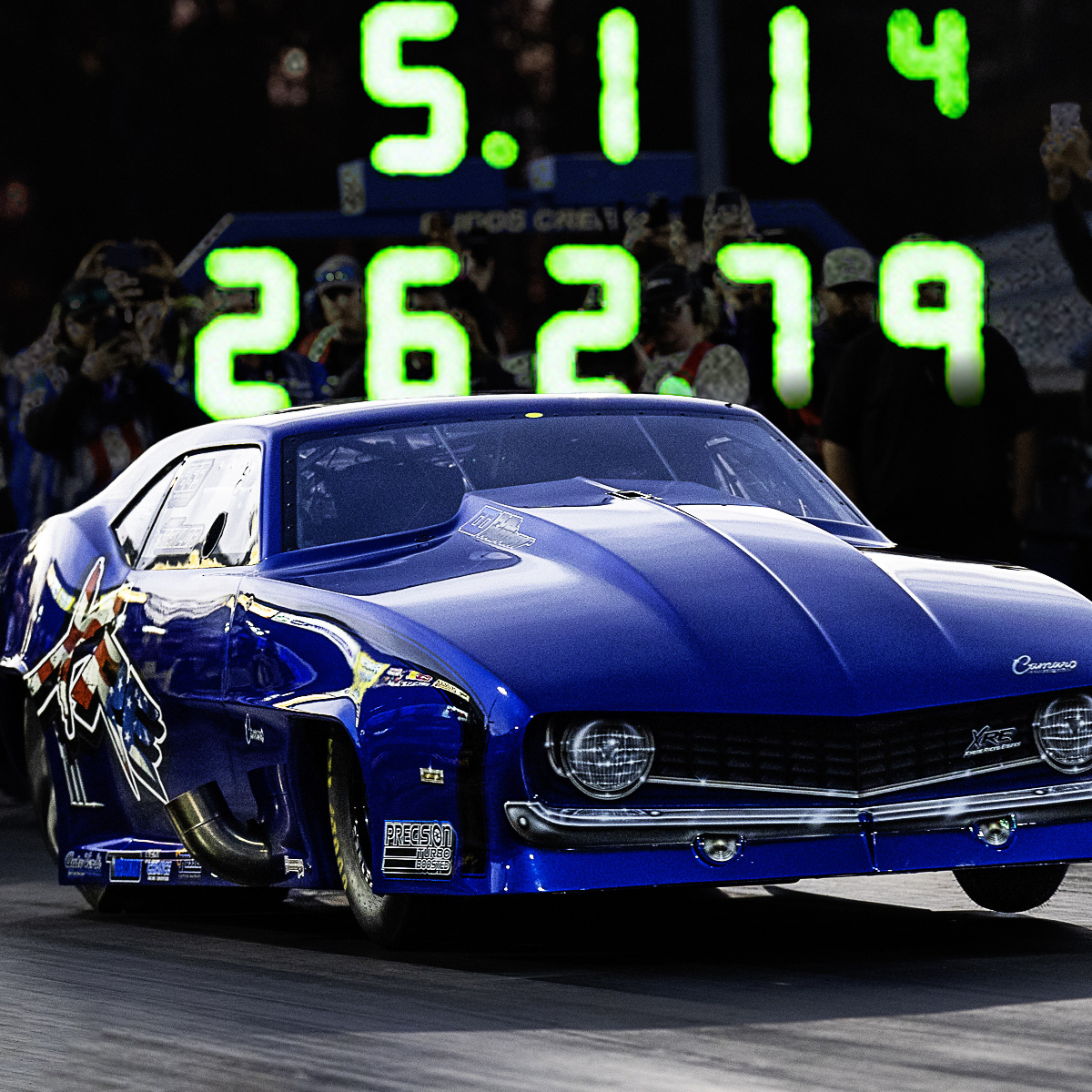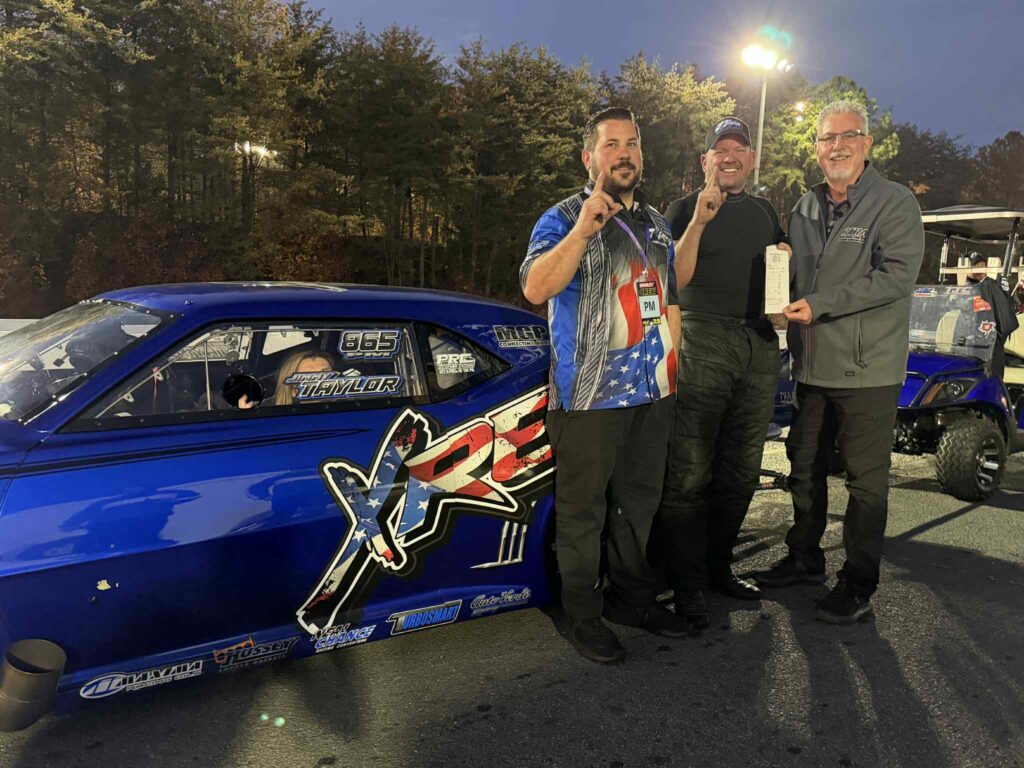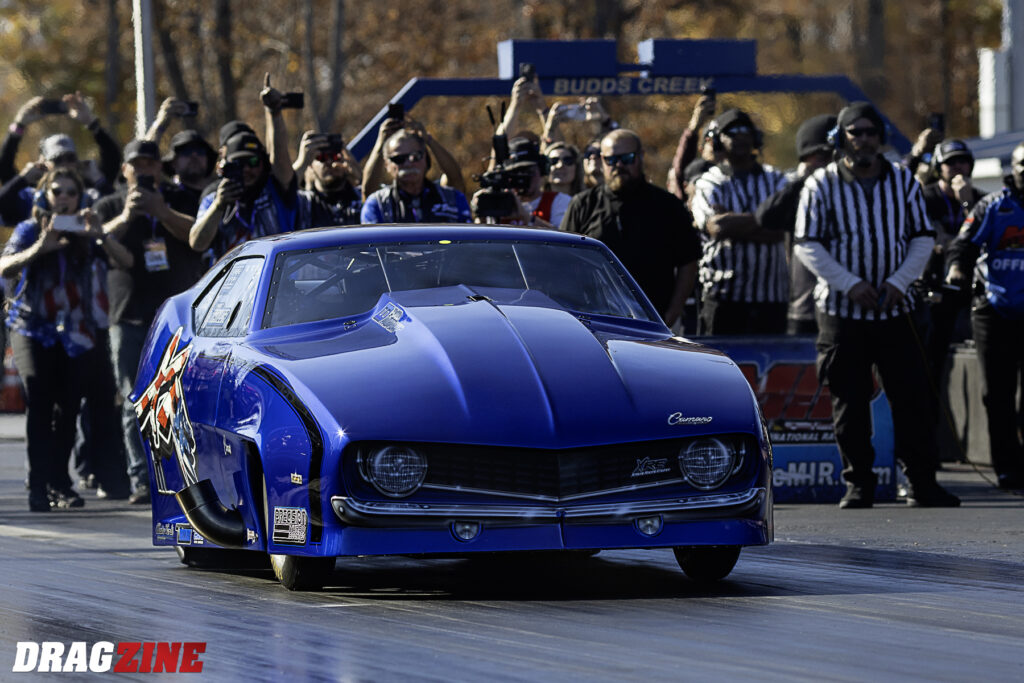
Jimmy Taylor’s bid to shatter one of drag racing’s last great barriers, a four-second, 300 mph quarter-mile in a full-bodied doorslammer, came agonizingly close at Maryland International Raceway’s World Cup Finals this weekend, but the Tennessee racer still left with history in his pocket. Taylor’s twin-turbo Camaro rocketed to a stunning 5.114-second, 262.79 mph blast, making it officially the quickest full-bodied doorslammer pass ever recorded, eclipsing Todd Moyer’s 5.14-second record. The historic run came after an earlier 5.25-second early shutoff pass that hinted at what was to come, and the numbers from the timeslip, .942 to sixty feet, 2.364 to the 330, 3.419 at 236.96 mph to the eighth, and 4.312 at the thousand-foot, cemented just how close Taylor came to breaking into the fours.
“I’d be lying if I said I wasn’t disappointed,” Taylor admits. “We didn’t go in the fours, but I think we went about it the right way. We were playing it safe, and honestly, it was a blessing that what happened did, because when we staged, it was darker than it looked on camera. I didn’t have my glasses, and I can’t see worth a damn in the dark without them. I thought I shut off at the mile-per-hour cone, but I actually lifted at the 1,000-foot mark and was all the way rolled out of the throttle by 4.6 seconds. It turned out to be the right call, because the aerodynamics on the hood had the car bottomed out. The nose was dragging the track, scraping the prep off, and the front tires were rubbing the carbon. Data showed we were going 282 mph when I lifted. If I’d stayed in it, it would’ve gone 300 right there, but we might’ve cut a tire down or worse.”

The team’s decision to raise the front ride height slightly and rework the strut setup overnight set the stage for a full-send daylight run on Sunday, one Taylor says would’ve been the attempt. But, relentless rain scuttled any hopes of getting back on track. “We were ready,” Taylor said. “We fixed the nose issue, and I was going to run it all the way out. But the rain never stopped. When they finally got cars down, there was still water coming up from cracks at the big end. We just decided it wasn’t worth it. As badly as we wanted it, we’ll do it after the first race of the Winter Series. We’re right there, we just need a couple of hits to the 330, get our data right, and we’ll full send it.”
Taylor’s best run of the weekend came after a wild sideways moment earlier in the event that had the car nearly scraping the wall. “That one where it kicked out, we had it wicked up,” he says. “We were trying to put it down close to the 3.20s in the eighth and then run it out the back. But the track just wasn’t there for those early numbers, so we backed it down. Carl [Stevens] dumped a bunch of boost and timing out on the record run, and I lifted before it ever hit the boost on the big end. But it was straight as an arrow. Pops and Carl, man, they’re amazing at setting that car up.”

Taylor credited converter builder Marty Chance, transmission guru Carl Rossler, and rearend housing fabricator Justin Carmack for supporting the endeavor and being there to inspect components for safety. “We were three-hundredths quicker to the 330-foot mark on that aborted pass than we were on the 3.38 run,” Taylor says. “And I was out of the throttle at the 330, 100 percent. The new converter from Neal Chance just works, it’s insane how much difference it made.”
Despite a few nagging online naysayers, Taylor says the response to his effort at the World Cup Finals was overwhelmingly positive. “Fans at the track were just ecstatic with what we were doing. People say they just don’t understand why we’re doing this, it doesn’t pay anything, but the opportunities it’s created for me to make money in other ways with sponsors and things has been 10 times more than any race has ever paid out in drag racing.”

Despite falling just short of his four-second quest, Taylor’s weekend was a success by any measure. “We broke the world record. The car’s in good shape, and we live to race again,” he says. “We’re testing for Snowbirds in a couple of weeks, then we’ll take it to PRI in Precision’s booth. After that, we’re going to make another attempt, maybe at Gainesville, but we’ll decide where we’re going. I just need the shutdown to feel safe. But I told Carl, next time, if it runs 300, it just runs 300 — I ain’t lifting until I know that damn thing’s in the fours.”
You might also like
ATI's Lightweight Steel Clutch Drum Assembly For Powerglides
ATI just released its ATI lightweight steel clutch drum assembly. The new 8.6 lb drum is almost a pound lighter to improve acceleration.


